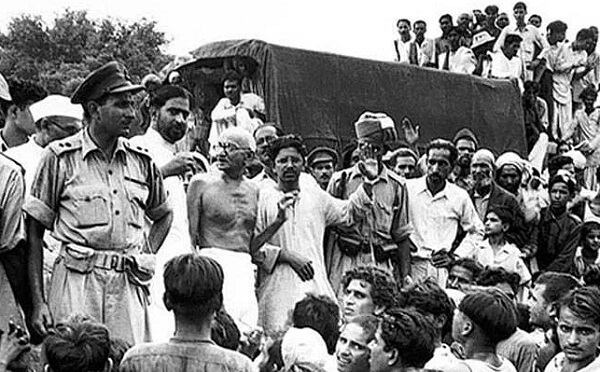The Champaran Satyagraha is of prime importance in the history of the Indian freedom struggle. It is this Satyagraha that made Mohandas Karamchand Gandhi Mahatma Gandhi. And this is the Satyagraha which showed India the path of freedom. After Gandhi’s arrival in Motihari on April 15, 1917, this Satyagraha of the farmers, which was started against the exploitation and atrocities of the British without any protest, demonstration and use of weapons, was completely successful. It was a matter of those days when the First World War was going on. The farmers of Champaran (Bettiah and Motihari) districts of Bihar along with the whole country were troubled by the tyranny and exploitation of the Firangis. Indigo cultivation was being done forcibly on their land. The cultivation of indigo was not only destroying the fertility of the fertile agricultural land of the farmers, but the farmers were also not able to produce the necessary food grains for their food. Along with the practice of three kathas of indigo in one bigha land, arbitrary Taxes were being collected. A spark was also burning inside against exploitation, suffering and tyranny.
On the suffering of Champaran, articles started being published in Pratap newspaper of Ganesh Shankar student. Meanwhile, Rajkumar Shukla, a simple farmer from Champaran, started mobilizing journalists Pir Mohammad Munis, Lomraj Singh, Santa Raut and many other farmers like him. When the British came to know about this, these people were put in jail. But these people did not give up. On coming out, they started again in their campaign. There was no way left for them, so it was decided to bring a big leader of the country to Champaran. First he went to Bal Gangadhar Tilak and then to Madan Mohan Malviya. At last Rajkumar Shukla met Mahatma Gandhi in this regard and urged him to lead the movement in Champaran. What happened after this is recorded as one of the biggest events in Indian history.
Gandhi made Champaran a laboratory of truth and non-violence. Gandhi writes in his biography “Experiments of Truth”- I did not even know the name of Champaran before going there. Indigo is cultivated, it was not even thought. A farmer from Champaran named Rajkumar Shukla followed him and said about Vakil Babu (famous lawyer of Bihar at that time and Brajkishore Prasad, father-in-law of Jayaprakash Narayan) that he would tell everything. Along with that he would have invited them to come to Champaran. This sequence continued and at last I had to go to Champaran.
As soon as Gandhi reached Champaran, the senses of the British officers started flying. He ordered Mahatma Gandhi to leave the district, but Gandhi was determined to get justice to the farmers. Gandhi refused to leave the district. After this, he was taken into custody and produced in the court on 18 April. Gandhi said in front of the magistrate in a very fearless and humble tone that he has come to Champaran to know the condition of the farmers, until he becomes aware of the condition, he will not leave Champaran. Even if they are punished for this, they are ready to suffer. The magistrate was astonished to see Gandhi’s truthfulness and fearlessness. If nothing was understood, he extended the date. …and this was the first victory of the Champaran Satyagraha.
Historians say that the British government did not want to have enmity with a personality like Gandhi between the World War on the one hand and Lenin’s Bolshevik Revolution in Russia on the other, ultimately the British bowing down to Gandhi withdrew the case and offered to cooperate in the investigation. Ordered. And it was a great victory of truth in Champaran. Now Gandhi started roaming in every village of Champaran and the farmers who gathered there in large numbers started recording their statements. As a result, the then provincial government formed a committee to investigate the atrocities on the farmers, including Gandhi. On its recommendation, the Tinkathiya tradition, which had been going on for years, ended legally. Along with this, 25 percent of the money recovered from the farmers was also returned. The effect of this non-violent satyagraha of Champaran was nationwide. After this it started being used everywhere. The result of this is that we all are free today.
Read the latest news about banking, economy and economic affairs on The Eastern Herald.


